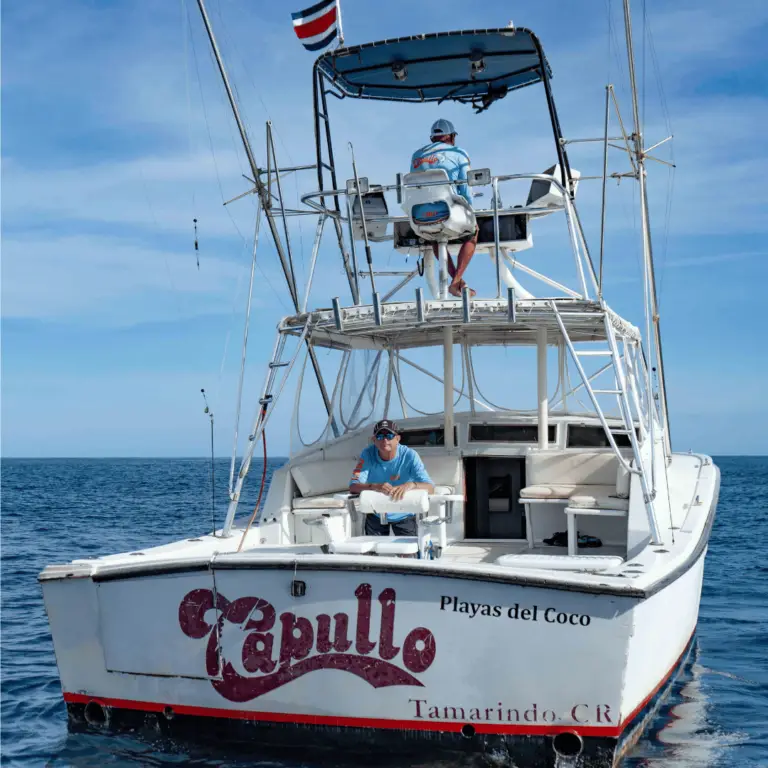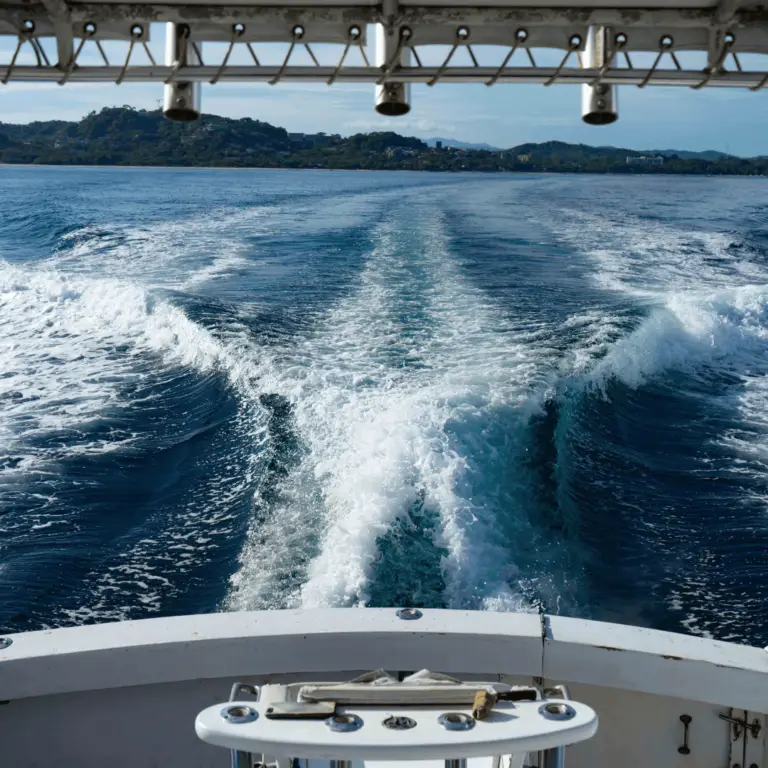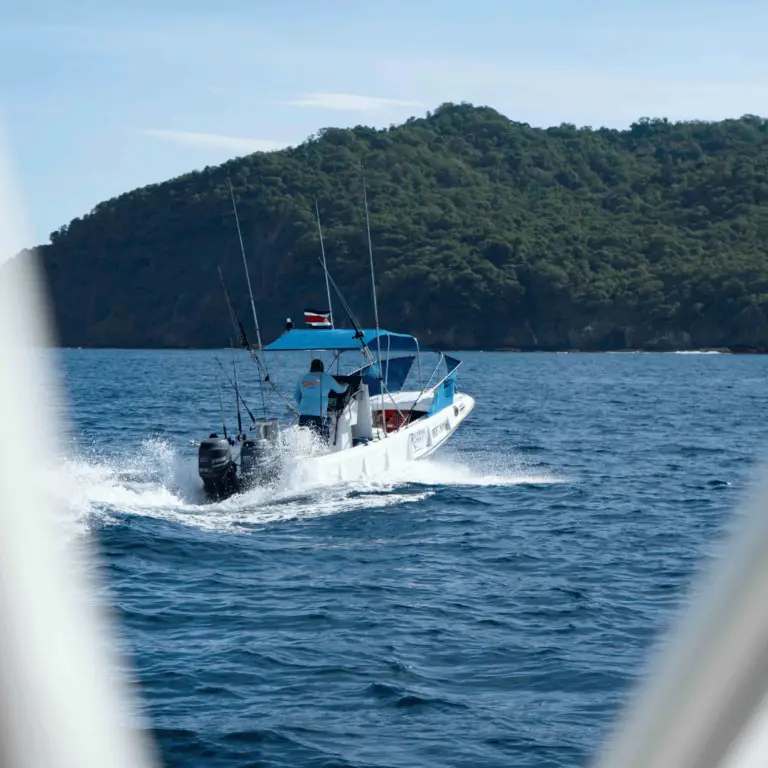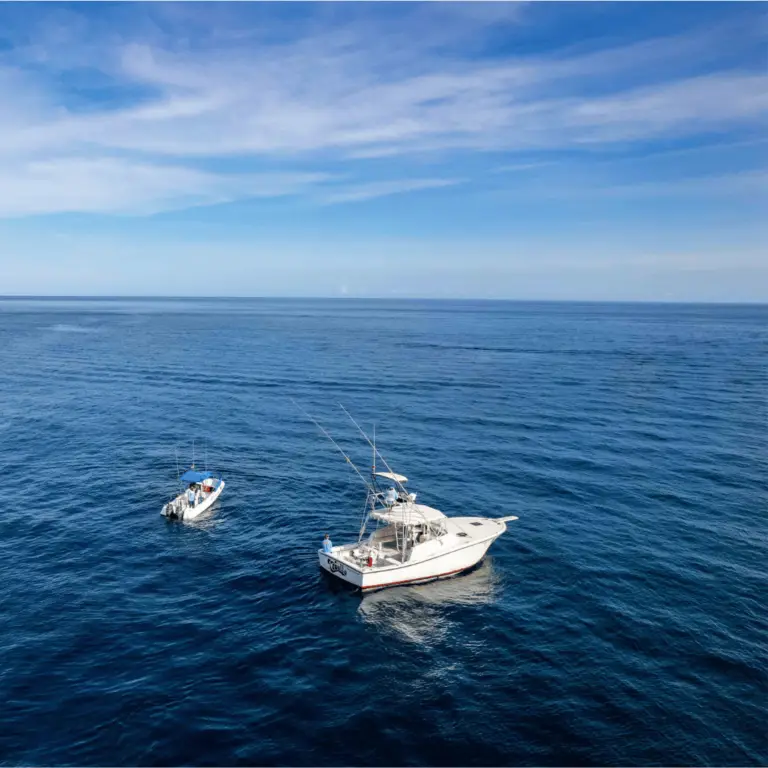Introduction
Costa Rica, hailed as a paradise for anglers with its unique natural beauty, rich biodiversity, and abundant water resources, promises an unparalleled fly fishing experience for passionate fishermen. Costa Rica’s rivers, ponds, and coastal waters host a vibrant underwater world teeming with colorful species, making fly fishing the perfect method for those eager to closely explore this magnificent scenery. In this article, you’ll embark on a journey into the exciting world of fly fishing in Costa Rica and savor the essence of this unique angling adventure.
What is Fly Fishing?
Fly fishing, a special fishing technique primarily applied in rivers and ponds, distinguishes itself from traditional angling methods. In fly fishing, artificial baits known as “flies” are commonly used instead of traditional bait and tackle. These artificial flies mimic the shape, size, and colours of the natural prey of fish and, much like real flies, perform enticing movements either on the water’s surface or beneath it.
Fly fishing demands a significant level of angling skill. The angler must cast the artificial fly accurately into the area where the targeted fish are located and then manipulate the fly to attract the fish’s attention, either on the water’s surface or below. Subsequently, the angler awaits the fish to strike at these artificial lures. It sets itself apart from many other forms of fishing due to its requirement for serious skill and, importantly, experience.
Primarily used for catching freshwater and saltwater fish like carp, trout, salmon, and similar species, fly fishing serves as both a sport and a means of finding solace and communion with nature.
Can You Fly Fish In Costa Rica?
Yes, fly fishing is possible in Costa Rica. Within its borders, Costa Rica offers the opportunity to catch various fish species, especially in coastal areas, rivers, and ponds, making it one of the most popular destinations for fly fishing.
As a country rich in both freshwater and saltwater fishing, Costa Rica features notable fly fishing locations such as Lake Arenal, Sarapiqui River, Tarcoles River, the Guanacaste, and the Tortuguero Canals.
Why is Costa Rica a Popular Fly Fishing Destination?
Costa Rica’s attractiveness as a fly fishing destination for both beginners and experienced fly fishermen is rooted in some very valid reasons. Among these, the following stand out:
Rich Fish and Fishing Diversity: Costa Rica boasts an incredibly diverse range of fish species. It ranks among the ideal destinations, particularly for fly fishermen targeting large sea creatures like tarpon, dorado, snook, and roosterfish.
Unique Natural Environment: Its natural environment, composed of rivers, ponds, ocean coastlines, and mangrove forests, creates ideal settings for fishing, making it a unique haven for anglers.
Suitable Climate Year-Round: Costa Rica enjoys a climate suitable for fly fishing throughout the year.
Abundance of Professional Fishing Guides: In Costa Rica, numerous professional fishing guides and tour companies provide guidance, equipment, and showcase the best fishing spots for those interested in fly fishing.
What Are the Best Locations To Fly Fish In Costa Rica?
Costa Rica offers a wide range of suitable places for fly fishing. Examples of the best fishing spots for different fish species include:
Nicoya Peninsula: Located on the Pacific coast of Costa Rica, the Nicoya Peninsula is particularly ideal for inshore fish species like roosterfish and snook. It provides a fantastic backwater experience amidst natural beauty.
Manuel Antonio: Situated on the Pacific coast of Costa Rica, near the larger town of Quepos, Manuel Antonio is a suitable place, especially for catching dorado, tuna, and sailfish.
Guanacaste Beaches: Situated on the Pacific coast, Guanacaste is famous for its beaches, forests, natural parks, and rich biological diversity. It’s a popular destination for catching mahi-mahi, yellowfin tuna, and other marine fish.
Golfito: Located in the southwestern part of Costa Rica, Golfito is a popular destination for fly fishing, as it offers a rich marine environment. While fly fishing in Golfito, you can target fish species such as tarpon, roosterfish, dorado, sailfish, and marlin.
Sarapiqui River: Sarapiqui River is an excellent location for catching large sea fish like tarpon and snook, as well as various freshwater fish species.
Lake Arenal: Lake Arenal, the largest freshwater lake in Costa Rica, is home to trout, making it a great destination for fly fishing.
Rio Colorado: Located on the northeastern coast of Costa Rica, along the Caribbean Sea, Rio Colorado is known for tarpon fishing and is an exciting area for fly fishing enthusiasts in general.
Tortuguero Canals: Tortuguero is a unique region with a mix of saltwater and freshwater environments, home to various fish species.
Costa Rica’s coastlines offer the opportunity to catch large ocean species. The Pacific and Caribbean coasts, popular destinations for surfing and fishing, are also attractive areas for targeting fish such as tuna, dorado, and billfish.
In conclusion, Costa Rica provides numerous options for fly fishing enthusiasts. The choice of region depends on the fish species you’re targeting and the type of experience you seek.
What Fish Species Can Be Caught Fly Fishing In Costa Rica?
Costa Rica, with its freshwater lakes, rivers, and rich marine life, is an exceptional destination for fly fishing. The list of the most popular fish species that can be caught using this method in Costa Rica is as follows:
- Tarpon
- Snook
- Roosterfish
- Dorado
- Guapote
- Permit
- Mackerel
Depending on which fish species you are targeting, different regions and seasons may be more suitable. It is important to seek assistance from local guides or fishing tour companies when fly fishing in these regions. Additionally, adhering to local fishing regulations in Costa Rica is crucial. Fly fishing surrounded by Costa Rica’s magnificent natural beauty and rich fishing potential can be an unforgettable experience.
When is the Best Time To Fly Fish In Costa Rica?
Generally, Costa Rica is a region where fishing is suitable throughout the year, but the ideal month for fly fishing can vary depending on the fish species you are targeting and the region you are in.
For example, the best months for tarpon fishing are typically from July to October, while for roosterfish, it’s from December to April. May to October is considered ideal for dorado fishing, but September and October can be challenging for snook fishing.
However, in general, the most suitable season for fly fishing in Costa Rica is during the dry season, which is known for stable weather conditions and minimal rainfall, occurring between December and April.
Additionally, when fly fishing in Costa Rica, it is often more favorable to go out during the early morning and late evening hours, although this can vary depending on the fish species, season, and region.
In Costa Rica, where fly fishing is possible almost year-round, you can obtain detailed information and advice about local conditions from fly fishing guides and local experts.
What Gear Do You Need To Fly Fish In Costa Rica?
While the equipment needed for fly fishing in Costa Rica can vary depending on the targeted fish species, region, and angler’s preferences, the fundamental gear required for fly fishing generally includes:
- Fly line, fly reel, and fly rod
- Leader and tippet
- Flies
- Fishing vest
- Waders (if planning to enter the water while fishing)
- Sunglasses, hat, and sunscreen (depending on the weather conditions in the Costa Rican region where you are fly fishing)
- Bug Spray (as a precaution against potential mosquitoes and other insects in the area)
These essential items form the basis of a fly fishing kit, and additional gear or variations may be necessary based on specific fishing conditions and preferences.
Are There Any Fly Fishing Trips In Costa Rica?
In Costa Rica, a fishing destination renowned for its natural beauty and rich fish diversity, fly fishing trips are organized. These trips are typically offered on a daily or package basis and may include services such as fishing guidance, equipment provision, transportation, and the supply of bait and hooks to optimize your fishing experience.
For more information regarding the dates, costs, and other details about fly fishing trips organized to various regions of Costa Rica, you can get in touch with us.
How Can a Fly Fishing Charter Trip Ensure a Smooth Fishing Experience In Costa Rica?
In Costa Rica, you can enhance your fly fishing experience by seeking support from a fly fishing charter tour. The success and smoothness of a fishing charter in Costa Rica depend on various qualities. These include professional fishing guides who are well-versed in local waters, fish behavior, and the best fishing spots in the region, quality equipment support, transportation arrangements that provide easy access to fishing locations, and experienced guidance along with the provision of suitable bait and hooks for the fly fishing experience.
In a Spanish-speaking country like Costa Rica, the success of a fly fishing charter tour also hinges on having a local team of Spanish speakers. A Spanish-speaking charter is highly crucial for the success and smoothness of the tour. This is because if the tour guide or team are local, they may have a better capacity to understand and interpret local waters and fish behavior. This can help optimize your fishing experience.
Furthermore, when fishing in Costa Rica, it’s important to adhere to local fishing regulations. A local team that speaks Spanish & English can better explain these rules and guide you accordingly.
Lastly, a local charter team can offer better recommendations regarding restaurants, hotels, and other amenities.
Therefore, if you’re considering a fly fishing charter tour in Costa Rica, it’s more likely that you’ll have a smoother experience by seeking support from a local Spanish-speaking tour team. These guides and teams can help you make the most of local experiences.
Methods for Catching Different Fish Species in Costa Rica
In Costa Rica, there are numerous fish species that can be caught using the fly fishing method.
Below, you can find 8 steps on how to catch different fish species in Costa Rica using the fly fishing technique.
How To Catch Tarpon Fly Fishing In Costa Rica?
Tarpon fish is a large and powerful species that can be caught through fly fishing in Costa Rica.
- Select regions like Tortuguero, Barra del Colorado, and Parismina where tarpon fish are found.
- Prefer the fishing seasons when tarpon migrates to the Costa Rican coasts, which are July-October and December-April.
- Work with experienced local guides.
- Opt for strong fly fishing equipment suitable for catching tarpon, as they are large and powerful.
- Use appropriate flies that are big, bright, and vibrant in color for tarpon, which are typically caught by surface fishing.
- Make long and accurate casts for tarpon, which often swim in shallow waters. Experiment with various retrieval techniques like fast retrieval, slow, and erratic retrieves.
- Be prepared for the leaps and turns of strong and athletic tarpon.
- After catching the fish, release it gently and quickly.
How To Catch Bonefish Fly Fishing In Costa Rica?
Bonefish, a fast and agile species, can be caught through fly fishing in Costa Rica.
- Opt for regions rich in bonefish, such as Tortuguero and Barra del Colorado.
- Work with experienced local guides.
- Prefer a light to medium-weight fly fishing rod and reel.
- Using bottom-dwelling flies is suitable for catching bonefish, which often search for food near the seabed.
- Make accurate, delicate, and quiet casts for bonefish, which typically feed in shallow waters.
- The fast retrieval technique can lead to missing bonefish. Slower and more steady retrieval is more likely to be effective.
- Approach bonefish, which are sensitive and cautious, with quiet and patient tactics.
- After catching the fish, release it gently and quickly.
How To Catch Roosterfish Fly Fishing In Costa Rica?
Roosterfish, known for its distinctive appearance and warrior-like nature, can be caught through fly fishing in Costa Rica.
- Prefer regions rich in roosterfish, such as Manuel Antonio, Jaco, Drake Bay, Golfo Dulce, and the Nicoya Peninsula.
- Work with professional and experienced local guides who are knowledgeable about the intricacies of local waters and currents.
- For roosterfish fishing, typically use heavy to very heavy class fly fishing equipment. Opt for a strong rod and a large saltwater reel.
- Use large and bright flies as bait.
- Roosterfish are often caught along the shoreline, so make accurate casts at the right time along the coast.
- Roosterfish are a fast and active species, so you can try both fast and slow retrieval depending on the fish’s position and behavior. Good casting is also important during retrieval.
- Be patient when calming and controlling the fish after catching it.
- Release the fish gently after catching.
How To Catch Sailfish Fly Fishing In Costa Rica?
Sailfish, a large and formidable species, can be captured through fly fishing in Costa Rica.
- Prefer regions rich in sailfish such as Manuel Antonio, Quepos, Golfito, and Tamarindo.
- Collaborate with a professional and experienced local guide who knows the local waters and sailfish behaviors well.
- Opt for sturdy fly fishing equipment ranging from heavy to very heavy-class rod, a large saltwater reel, and heavy monofilament lines for sailfish fishing.
- Use large and bright flies as bait.
- Since sailfish are often found near the surface, make casts close to the surface. Slow and delicate casts can be more effective in attracting sailfish.
- For the fast and active sailfish, retrieve your fly quickly and irregularly.
- You may need to make a quick set when the sailfish strikes to firmly set the hook.
- Gently release the caught fish and ensure its survival.
How To Catch Trout Fly Fishing In Costa Rica?
Trout is a species that can be captured through fly fishing in Costa Rica, especially in high mountain regions, clean and clear waters of ponds, and rivers.
- Prefer areas suitable for trout fishing such as Los Quetzales National Park, Rio Savegre, and Guanacaste Mountains.
- Collaborate with professional and experienced local guides who are knowledgeable about the regional waters and trout behaviors.
- Use lightweight to medium-weight fly fishing equipment for trout fishing. Since trout are often small, you can use a thinner monofilament line.
- Use flies that mimic natural bait such as flying insects, caddis larvae, or other local insects that trout typically feed on.
- Cast your flies accurately by aiming correctly. Trout often feed in areas with currents, so getting the right position is crucial.
- For trout, which often respond to moving baits, try to create a natural movement by retrieving your flies slowly.
- You may need to make a gentle set to firmly set the hook.
- Handle trout, which is a sensitive and cautious species, calmly, and release them gently.
How To Catch Snook Fly Fishing In Costa Rica?
Snook is an exciting species that can be caught through fly fishing in Costa Rica.
- Prefer areas suitable for snook fishing such as Manuel Antonio, Quepos, Golfito, Tortuguero, and Tamarindo.
- Collaborate with professional and experienced local guides who are knowledgeable about the regional waters and snook behaviors.
- Opt for medium to heavy-class fly fishing equipment for snook fishing.
- In snook fishing, which often targets baitfish swimming near the surface, choose large and bright popper flies or flies with fins.
- For snook, which are often found in coastal waters, making the right casts at the right time is crucial.
- Retrieve your fly quickly and erratically as snook are fast and aggressive.
- You may need to set the hook quickly when the snook strikes.
- Once you’ve caught and controlled the strong and energetic snook, release it gently and ensure its survival.
FAQ About Fly Fishing In Costa Rica’s Waters
Do you need a license to fly fish in Costa Rica?
Costa Rica does not have a general requirement for a permit or license for fly fishing. However, fishing may be restricted or subject to permits in certain areas such as marine parks or private conservation areas. Therefore, it is important to contact local authorities in the area where you plan to fish and learn about the applicable rules and regulations.
Additionally, it is important to respect environmental conservation and sustainable fishing principles. Protecting the fish you catch and practicing sustainable fishing helps preserve Costa Rica’s natural environment and fish populations.
Does Costa Rica have a catch and release policy?
In Costa Rica, most local and national fishing policies promote sustainable fishing and environmental conservation. As part of these policies, “catch and release” practices are implemented for many species. However, this policy can vary depending on the species and region.
To go fly fishing in Costa Rica, getting professional guidance from local guides or fishing tour companies can help you have a better experience.
What challenges arise when fly fishing in Costa Rica?
Potential obstacles you may encounter while fly fishing in Costa Rica include rapidly changing weather conditions, illegal fishing in certain areas designated as protected or privately owned, specific regulations encouraged for sustainable fishing and environmental conservation, challenging fishing areas like marshes and shallow waters, communication issues due to language and cultural differences with the local population, and inexperienced, non-professional, or non-local guides.
How much does fly fishing in Costa Rica cost?
The cost of fly fishing in Costa Rica can vary depending on factors such as accommodation, guiding and tour services, equipment rentals, the chosen region, flights and transportation, season, and more.
Generally, the cost of fly fishing in Costa Rica is contingent on personal preferences and plans. Conducting thorough research can assist you in devising a budget-friendly plan that aligns with your vacation expectations. Keep in mind that supporting sustainable fishing and environmental conservation policies is also important.
Is experience required to fly fish in Costa Rica, or can beginners join as well?
You don’t need to be an experienced angler to fly fish in Costa Rica. Novice anglers can also join fly fishing tours and gain experience with the guidance of local experts.
What should one be mindful of while fly fishing, and how is safety ensured?
There are some important points to be mindful of to ensure safety while fly fishing.
Firstly, working with experienced guides is crucial. Predicting the weather, having the necessary safety equipment, being prepared for natural obstacles like marshes, swamps, or rocks, possessing technical knowledge, understanding environmental conservation principles and local practices, having an emergency plan, and obtaining the required fishing permits are all essential aspects of ensuring safety and responsible angling.






